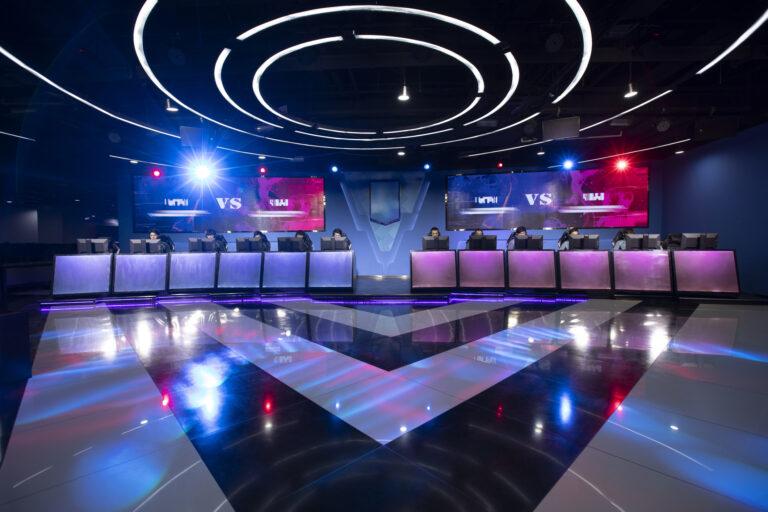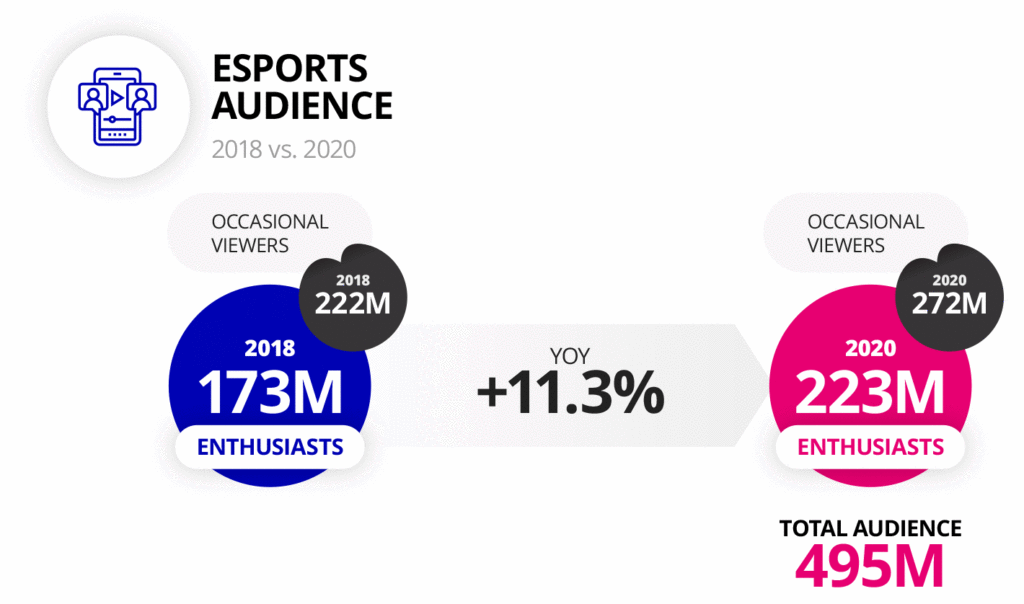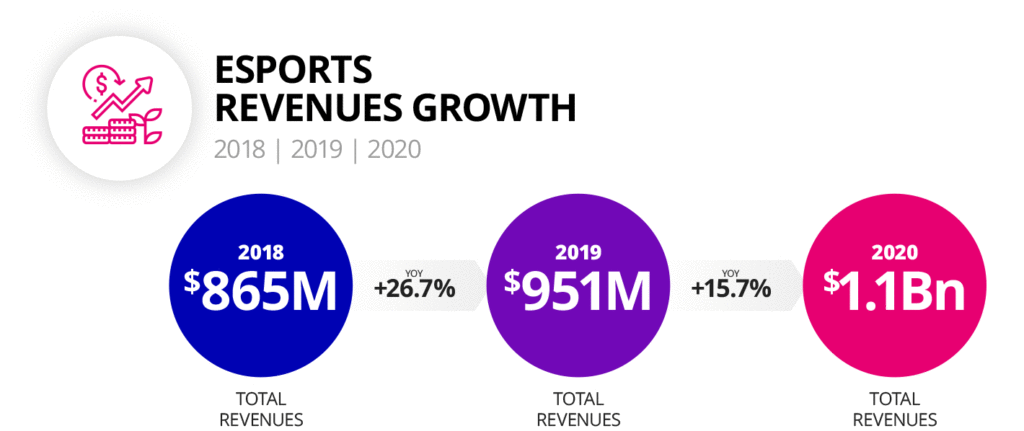For some industries that have been around for decades, like dentistry and plumbing, there is little need for long-winded explanations about what these sectors do or the benefits they provide. Familiarity equates to acceptance. But for many fast-growing business segments like fintech, renewable energy, and artificial intelligence, their purpose, business models and day-to-day business dealings often defy simple descriptions.
Esports is one such industry. Is it a sport? A novel video game experience? Is it a new mash-up of the gaming and sports worlds? The confusion around how to define esports has led to a few common misconceptions. Let’s dive in.
Misconception #1:
Esports is Not a Sport
Let’s face it; esports has an identity crisis. Yes, it involves video games and gameplay, and to some, esports is simply a marketing vehicle for game publishers looking to expand market awareness and sales. But we also can see that it’s an emerging sport; with real athletes wearing brand-adorning uniforms, playing in regional and international tournaments for prize money, winning physical trophies, and signing lucrative brand endorsement deals.
Nike recently signed a huge endorsement deal with esports player Cloud9 and had previously signed a deal with Jian ‘Uzi’ Zihao, a League of Legends player for Chinese organization Royal Never Give Up. Nike is not alone. Brands like Louis Vuitton, H&M and Under Armour have also jumped into esports endorsements.
Team Liquid’s collaboration with one of the most popular anime brands in the world, Naruto Shippuden, highlights a major opportunity for both sponsors and esports organizations looking for cross-branded merchandising deals. If esports is not a sport, how can they negotiate merchandizing deals worth more than many contemporary sports merchandizing arrangements?
We also know that esports has been recognized as an official medal sport at the 2022 Asian Games and may soon be accepted as an official Olympic sport. As far as legitimacy of an upcoming sport is concerned – it doesn’t get more official than being recognized as a worldwide game by the biggest sports body on the planet.
Esports is also a fandom experience. Everyday esports fans from all over the globe watch live YouTube and Twitch streams to follow the gameplay of their favorite teams and players. Not only are audiences entertained, but up-and-coming players can learn how to improve their skills by studying the techniques of the players they admire.
These are just a few of the many examples that prove esports is not only a bona fide sport, but a business juggernaut in its own right.
Esports Misconception #2:
Esports is a Fad
A fad? Hardly. Esports is big and it’s only getting bigger. In fact, esports has surpassed many traditional sports in terms of revenue and viewership.
McKinsey & Company claims the esports industry hit $1.1 billion in revenue as of 2020. According to Rethink Research, esports is on verge of hypergrowth to $5B plus in a few years.
The Esports Trade Association (see two graphics) provides statistics around the hyper growth in audience size and revenue that showcase why esports is much more than a short-term fad.
Have you seen any esports leaderboards lately? Esports athletes are earning multimillion dollar annual prize money for winning tournaments, and many have their own channels on Twitch and YouTube where they earn advertising revenue from posting curated viewing experiences and esports commentary.
Traditional sports are now taking cues from esports; diversifying operations beyond their core offerings, moving more rapidly toward lifestyle brand positioning, deploying new technologies such as augmented reality and deep data laying during broadcasts, plus accelerating both content creator strategies and fan engagement tactics to increase engagement across devices and platforms.
Esports Misconception #3:
Gender Issues Don’t Exist in Digitally Native Gameplay
Since nearly anyone from anywhere can generally participate in esports events, you could draw the conclusion that this would lead to an inclusive community and an even playing field. But that doesn’t seem to be the case. The new industry has come under scrutiny from the media, lawyers, and gamers alike for its “pervasive culture of harassment [which] threatens to mar the promise of gender equity in one of the few competitive sports where physical strength, agility and body size do not dictate success.”
Some female athletes mask their online identities or refuse to turn their mics on to avoid being called out by gender. Foul language, vulgarity, and forms of harassment are rampant in gaming but perhaps less so within esports tournaments where there are gameplay behavior rules that athletes pledge to abide by. However, there is no universal enforcement of anti-harassment rules across esports tournaments – some events have them, some don’t. When events do include anti-harassment guidelines, they aren’t always enforced with the same level of scrutiny. Sponsors will need to be firm, demanding that the tournaments they’re involved with rise to higher standards.
Segregating men and women into gender categories when there is no need to do so in esports may compound gender issues. While esports does require skill and stamina, it is a predominantly mental game between competitors rather than a physical brute strength matchup. Traditional sports have historically separated men and women – perhaps for good reason, but there no need to do so in esports.
Some esports analysts claim that women earn less money than their male counterparts simply because the viewership in female-only competitions is much lower – resulting in less monetization opportunities and a smaller pool of funds to draw from. Regardless of the reasons behind the gender pay gap in esports (which surely goes deeper than viewership), coed or gender-fluid teams could solve for creating a larger prize pot and helping women earn higher more for wins.
Time will tell what steps will be taken to reform gender issues in esports, but one thing is for certain: these issues are enough the derail the industry’s bright future, and the change cannot happen fast enough.
Esports Misconception #4:
Esports is a Low Threat Industry
It is patently untrue that esports is at low risk to threats such as phishing attacks, in-game cheating, stream ripping, ransomware, IP theft, and other forms of cyberattacks.
In 2017, the E-Sports Entertainment Association (ESEA), one of the world’s largest competitive video gaming communities, was hacked, resulting in 1.5 million records leaked after alleged failed extortion attempt.
In 2019’s World Cup for Fortnite, 1,200 players had their accounts suspended for cheating.
As the value of esports live streams increases, we will likely see a news reports rushing in about major piracy events – criminals follow the money, and there’s no doubt that they will continue to be drawn towards esports as the cash continues to flow. In the meantime, what are some of the biggest threats facing the esports ecosystem? Here are a few:
Risks for Esports Athletes
- Phishing attacks
- Ransomware
- In-game cheating
- Credential theft
- Stolen PII
Risks for Video Game Companies
- PII and IPO theft
- Man in the middle attacks
- Code injection
- SQL and API injection
- User account theft
- Damaged reputation
- Illegal betting
- In-game cheating
- Device spoofing
Risks for Tournament Organizers
- DDoS attacks
- SQL and API injection
- Event server exploits
- Pirated streams
- Match fixing/illegal gambling
- Malicious debugging
The gaming industry is under constant threat from cheaters, pirates and hackers who are hell bent an altering gameplay to give players unfair advantages or even stealing IP. Game publishers spend lots of time and energy defending the integrity of their games to ensure a level playing field of fairness.
The traditional sports industry battles video piracy on a daily basis, deploying complex digital rights management technology, watermarking and anti-piracy takedown services to thwart the bad guys.
A growing trend we’re seeing in esports is stream ripping, whereby pirates are hijacking live streaming tournaments to broadcast in their own illicit streaming services, siphoning away valuable ad revenue from broadcasters who retain the official broadcast rights. These could be Twitch, YouTube or any number of telcos who are now offering esports along-side other sports offerings.
Martin Bergenwall, EVP of Product Development for Verimatrix, believes that many aspects of sports broadcast rights are similar to the early years of traditional sports broadcasting, “The value of esport tournament streams is high while it’s streamed but becomes lower very quickly. In other words, it has a short-term high value, much like a traditional live sports broadcast, and lower value long term (ie. you know the result of the game already, so the value is lower the next day, but not zero. This is different than e.g. premium studio movie content that retains its value for a much longer term, and people pay for movies that are years old. That also dictates the security requirements for esports — for example watermarking and quick detection of a leak to turn it off becomes important.”
As the value of esports streams increases, so will piracy, as pirates go to where the money is.
The Top 7 Esports Revenue Sources:
- Sponsorships
- Streaming advertising
- Media rights
- Channel subscription fees
- Fan donations
- Ticket sales
- Merchandise Sales
A fact which may surprise many: 69% of esports revenue comes from sponsorships and advertising, according to Newzoo.
We also hear an argument that many esports tournaments are free to air, so why would pirates target them? Content, whether it’s played on free-to-air or subscription platforms, is not free. When streams are pirated, it results in revenue losses across the entire esports content production & distribution chain from the teams to the tournaments to the stream casters. Today, live content is more valuable than a library of recorded content but that will likely change as libraries grow in size, scope and importance.
There are so many similarities between the traditional sports industry and esports – one of the main differences being the value of content today. Just like piracy has increased as sports broadcasting has grown, so esports will need to grapple with those who wish to steal content, hack gameplay, or break into apps, disrupting valuable revenue streams.
To learn more about how to protect the entire esports workflow, download our new eBook, “Securely We Stream, United We Play: How Safeguarding Streaming Sports and Esports from OTT Piracy Can Impact Your Bottom Line”. You will learn best practices for safeguarding esports content, gaming apps, and the revenue they generate.









The Counterspy Effect: Operational Efficiency and the End of Piracy Losses